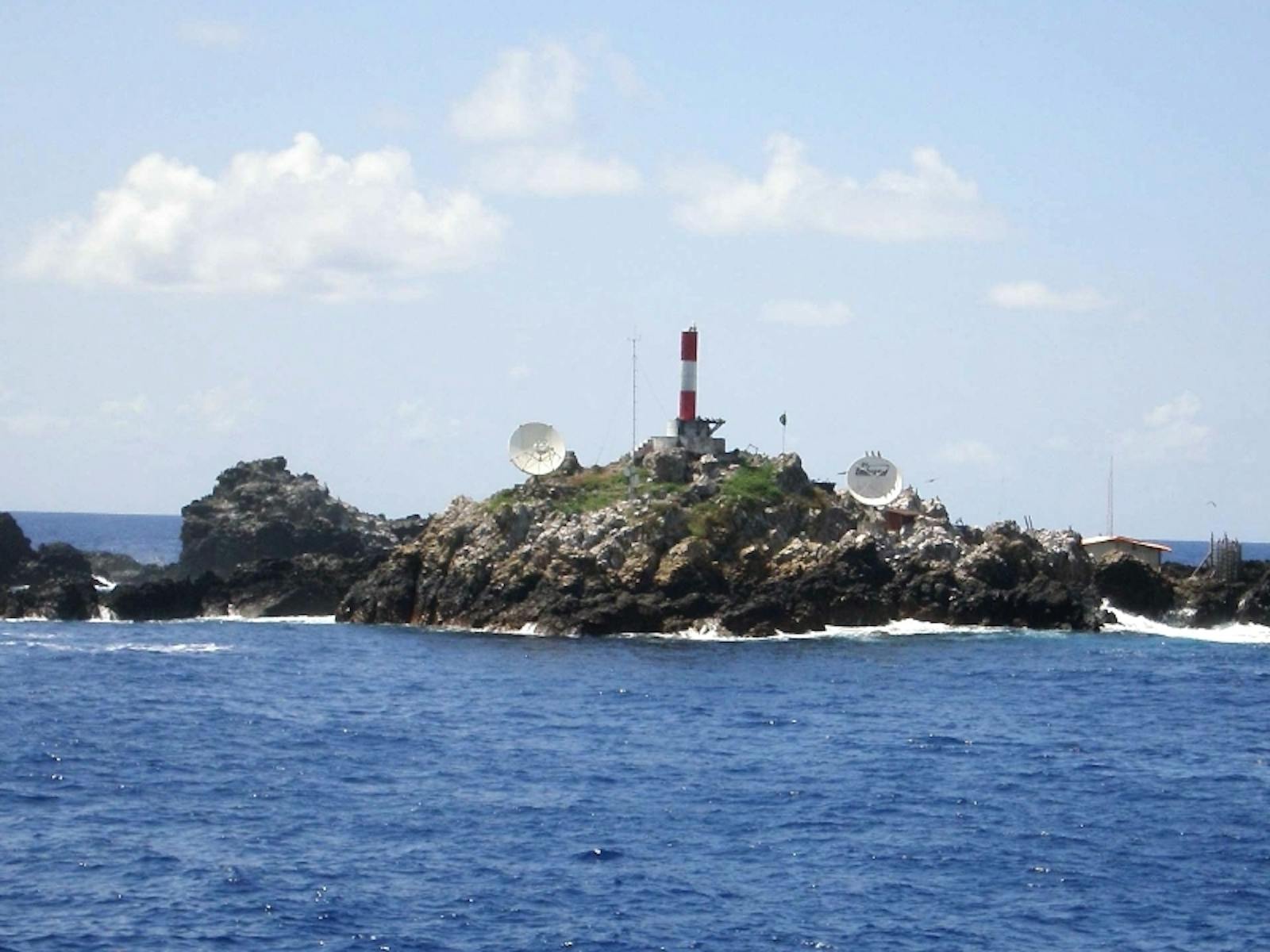St. Peter and St. Paul Rocks
The ecoregion’s land area is provided in units of 1,000 hectares. The conservation target is the Global Safety Net (GSN1) area for the given ecoregion. The protection level indicates the percentage of the GSN goal that is currently protected on a scale of 0-10. N/A means data is not available at this time.
Bioregion: Brazilian Atlantic Moist Forests (NT14)
Realm: Southern America
Ecoregion Size (1000 ha):
1
Ecoregion ID:
609
Conservation Target:
99%
Protection Level:
6
States: Brazil
Sally Lightfoot crabs occupy the few small, rocky islands of St. Peter and St. Paul Rocks in the Atlantic Ocean between Brazil and the coast of West Africa. This is one of the few places on Earth where an underwater oceanic ridge breaks through the surface of the sea, providing unique habitats for the Sally Lightfoot crab and other species.
More than 800 km from South America, St. Peter and St. Paul’s Rocks are a small group of islands in the equatorial Atlantic Ocean. The island group is 250 m across, and reaches up to 19.5 m above sea level at their highest point. These small islands are part of the mid-oceanic ridge of the Atlantic Ocean, one of the world’s longest mountain chains, which extends 4,000 m into the ocean.
The Earth’s crust separates along this ridge, creating new ocean floor. Underwater volcanoes and lava flows occur all along the ridge. In some areas, the ridge is so high that it forms islands. The only source of freshwater on the St. Peter and St. Paul’s Rocks comes from rain, and there is almost no vegetation. The meager terrestrial biota that does occur includes very simplistic fungi and algae. St. Peter and St. Paul’s Rocks were one of the few sites visited by Darwin on the 1860 Beagle expedition.
.jpg)
The flagship species of the St. Peter and St. Paul Rocks ecoregion is the Sally Lightfoot crab. Image credit: Creative Commons
While terrestrial plants are scarce, the isolated islands provide habitat for extensive marine biota. This food source supports many seabirds, which are the only vertebrate wildlife found on the islands. Breeding seabirds found on the Rocks include brown booby, brown noddy, and black noddy. The bird eggs occasionally fall prey to crabs. The invertebrate component of the ecoregion’s food chain primarily consists of microbial feeders. These include protozoa, nematodes, bdelloid rotifers, and mites.
Scientists and military personnel are the only human visitors to these islands and pose very few direct threats. St. Peter and St. Paul Rocks are in the center of their ranges for the seabirds found there. Old accounts of visits to the island reported very large numbers of birds on the Rocks. In his journals, Darwin describes St. Peter and St. Paul Rocks as consisting of “a vast multitude of sea-fowl,” and other historic naturalists have noted “birds hovering in [the] thousands.”
These accounts are not consistent with more current numbers observed, and it is therefore suspected that the seabird population of St. Peter and St. Paul Rocks are declining. It is thought that this is due to human disturbance or possibly to the gradual erosion of the Rocks into the sea. Excluding this possible decline, the ecology of St. Peter and St. Paul’s Rocks is relatively stable.
Threats are not numerous for these isolated island rocks; however, climate change and the subsequent increase in ocean levels could eventually cover this rock ecoregion. Also of concern is the decreasing sea bird populations and the lack of knowledge to identify the cause. The priority conservation actions for the next decade will be to: 1) increase research on the ecoregion’s native biota; 2) access and mitigate the impacts of climate change in the region; and 3) limit ecotourism in this fragile ecosystem.
Citations
1. Trowbridge, L. 2018. Islands in the Atlantic Ocean about halfway between South America and Africa. https://www.worldwildlife.org/ecoregions/nt1318. Accessed June 22, 2018.
2. Smith, H.G., P. Hardy, I.M. Leith, V.W. Spaull, and E.L. Twelves. 1974. A biological survey of St. Paul´s Rocks in the equatorial Atlantic Ocean. Biol. J. Linn. Soc. 6: 89-96.
3. Darwin, C. 1860. Journal of researches into the geology and natural history of the various countries visited by H.M.S. Beagle round the world. Murray, London.
4. Moseley, H.N. 1879. Notes by a naturalist on the ¨Challenger¨. Macmillan, London.



